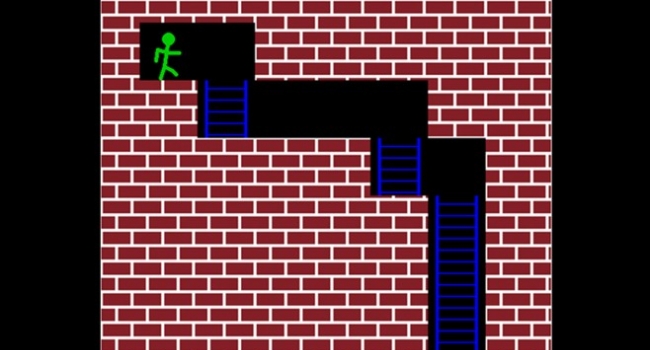- Latest news▼
-
18:00, April 18 Daily Mail: Elderly woman in China gets infected with brain-eating amoeba

-
14:19, April 18 Obesity: exercising before breakfast helps you lose weight faster

-
10:42, April 18 The Conversation: childhood trauma can cause pathological hoarding

-
08:37, April 18 Daily Mail: Satiating food reduces cravings for sweets, nutritionist says

-
18:22, April 17 First Armenian-German Conference entitled “Heart Failure Spring School”

-
08:38, April 17 Why do kids usually recover from COVID-19 more easily than adults?

-
14:37, April 16 Daily Mail: intermittent fasting is not suitable for children and women before their periods

-
16:41, April 15 Cell: in carriers of defective BRCA2 gene, sugar consumption increases cancer risk

-
15:04, April 15 305 cases of measles recorded in Armenia so far in 2024

-
14:38, April 15 Food and Environmental Virology: tea contributes to effective coronavirus control

-
12:41, April 15 Daily Mail: vitamin A, B3 and E supplements can be dangerous

-
10:56, April 15 Diabetes Care: evening physical activity is good for the heart

-
08:27, April 15 Women are more susceptible to blood loss and death during bypass surgery than men, researchers say

-
18:42, April 13 WHO: Nigeria pioneers revolutionary meningitis vaccine

-
16:43, April 13 One-third of women experience menstruation-related migraines, most often during premenopause - study

All materials
Brain stimulation guides people through an invisible maze

You’re stuck in a maze. You can’t see the walls, or the floor. All you have to navigate is a device on your head stimulating your brain to tell you which way to go.
In an experiment at the University of Washington in Seattle, participants solved a maze puzzle guided only by transcranial magnetic stimulation (TMS). The findings suggest that this type of brain prompt could be used to augment virtual reality experiences or help give people who are blind “visual” information about their surroundings.
Darby Losey and his colleagues created a virtual maze in the style of a simple 2D video game through which people had to guide an avatar. But they couldn’t actually see the maze – instead, they faced a blank screen. At regular intervals, a question box would pop up asking if they would like to move forward or make a turn.
How did they know whether to keep going or change course? Each time their avatar got too close to a wall, they were given a dose of TMS to the primary visual cortex at the back of their brain.
TMS produces small electric currents that can at certain intensities induce the perception of a flash of light called a phosphene. No light actually enters the eye, but the brain still “sees” it. Phosphenes can also occur if you put pressure on your eyeballs when rubbing your eyes.
To successfully escape from the maze, all the participants had to do was carry on walking until they experienced a flash of light. When that happened, they knew they had reached a wall and had to turn.
Participants successfully completed an average of about 92 per cent of the steps to get through a variety of different mazes. In contrast, a control group provided with a fake TMS machine that gave them no stimulation completed just 15 per cent, suggesting that TMS was helpful in guiding people and they weren’t just guessing.
“A lot of research has been done trying to extract information from the brain,” says Losey. He is more interested in using TMS to put information into it.
Phosphenes are not only experienced by sighted people, but also those who are blind. This means that similar systems could one day help to give people who are blind more information about their surroundings by providing “visual” clues using brain stimulation.
“This is a very promising initial study,” says Eric Thomson at Duke University in Durham, North Carolina. The set-up is currently basic, given that the participants only had a simple binary choice to move forward or turn. “But it has the potential to be expanded to convey more information,” says Thomson.
Losey’s ambition is to eventually augment virtual reality in a way that can’t be achieved with a pair of goggles alone. “Traditionally virtual reality is done through goggles and headsets, but really it’s your brain that creates your reality. We want to go directly to the brain,” he says.
He wants to find ways to use brain stimulation to communicate more complex experiences than just a flash of light. “The ultimate goal is to convey other forms of information. That could be something abstract, like the colour blue, or even an emotion.”
Follow NEWS.am Medicine on Facebook and Twitter
- Video
- Event calendar
- Archive
- Most read
month
week
day
- Pediatrics: Hypoglossal nerve stimulation implant helps with sleep apnea 1348
- Health minister: Simulation educational center will be created, assisted reproductive technology capacity will increase in Armenia 1305
- WHO: Nigeria pioneers revolutionary meningitis vaccine 1157
- One-third of women experience menstruation-related migraines, most often during premenopause - study 1125
- Women are more susceptible to blood loss and death during bypass surgery than men, researchers say 845
- Food and Environmental Virology: tea contributes to effective coronavirus control 829
- Daily Mail: vitamin A, B3 and E supplements can be dangerous 827
- Cell: in carriers of defective BRCA2 gene, sugar consumption increases cancer risk 793
- 305 cases of measles recorded in Armenia so far in 2024 791
- Diabetes Care: evening physical activity is good for the heart 780
- Daily Mail: intermittent fasting is not suitable for children and women before their periods 606
- First Armenian-German Conference entitled “Heart Failure Spring School” 396
- Why do kids usually recover from COVID-19 more easily than adults? 216
- The Conversation: childhood trauma can cause pathological hoarding 188
- Daily Mail: Satiating food reduces cravings for sweets, nutritionist says 176
- Find us on Facebook
- Poll





